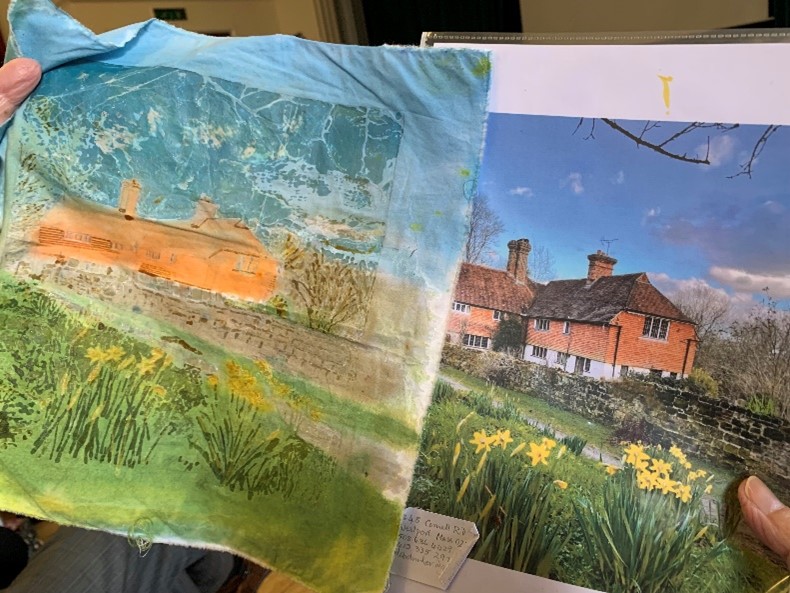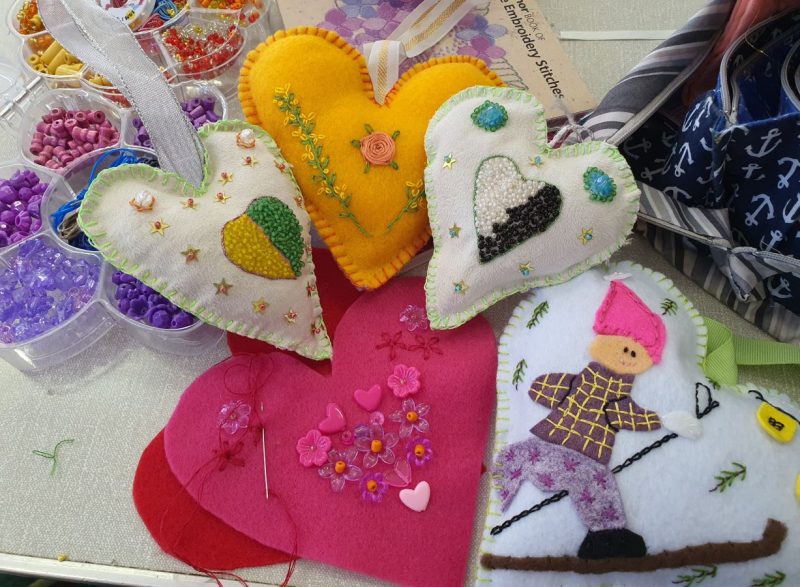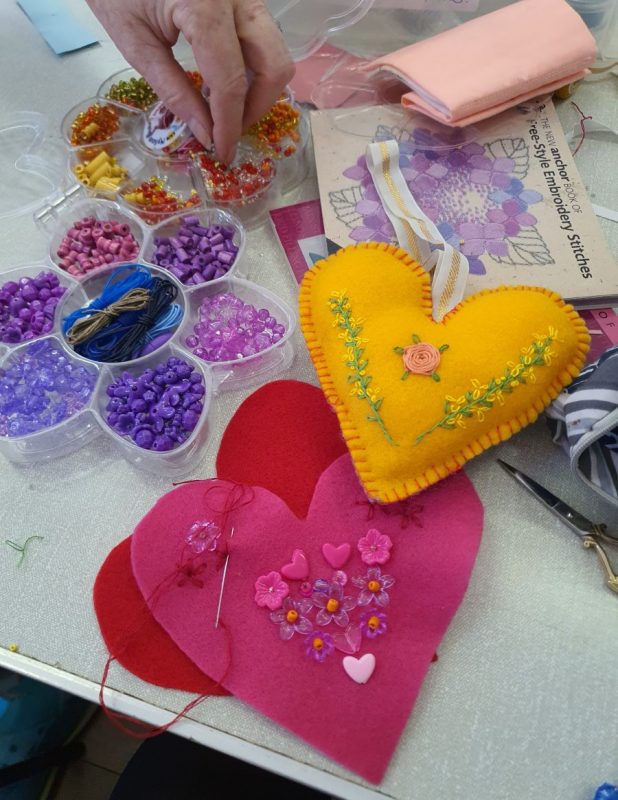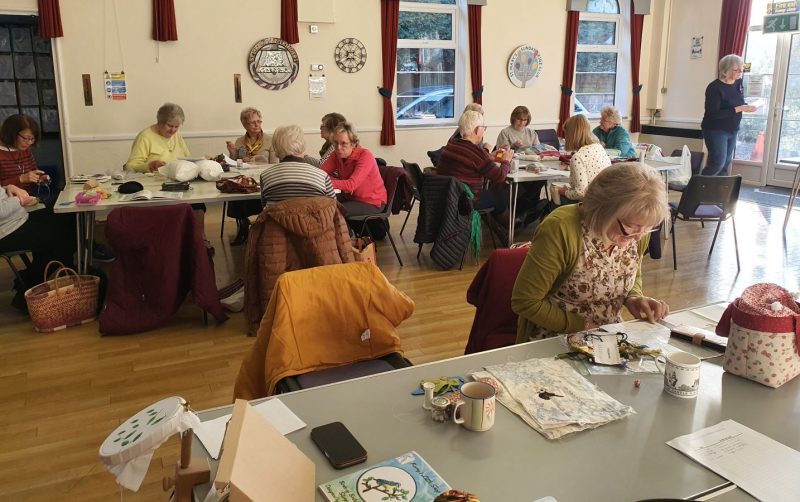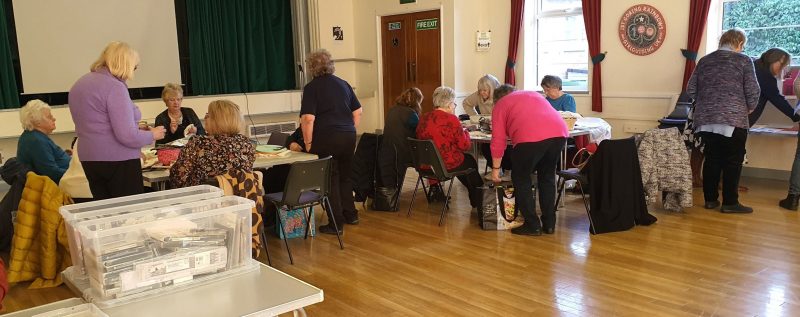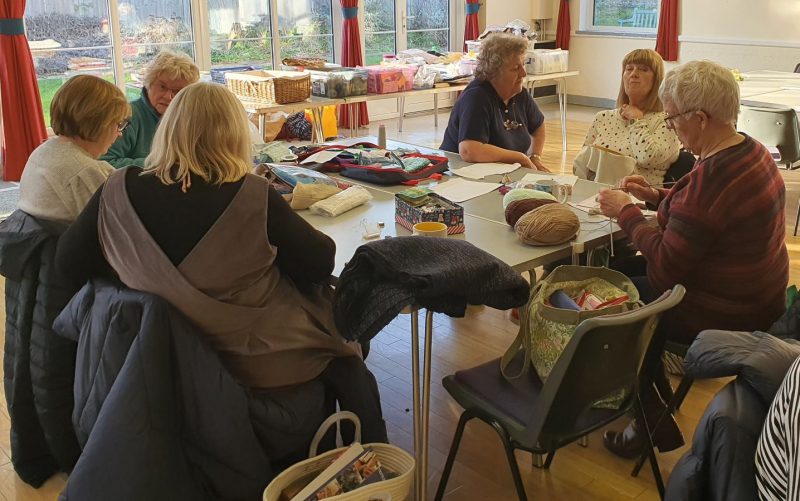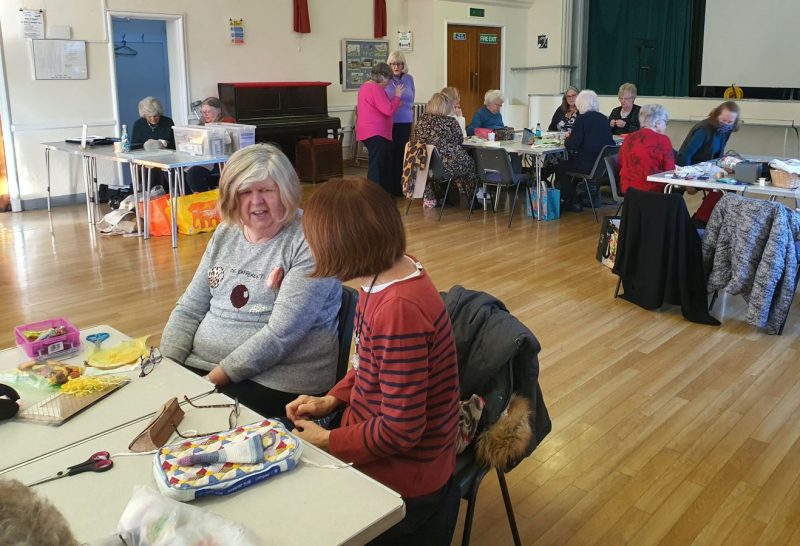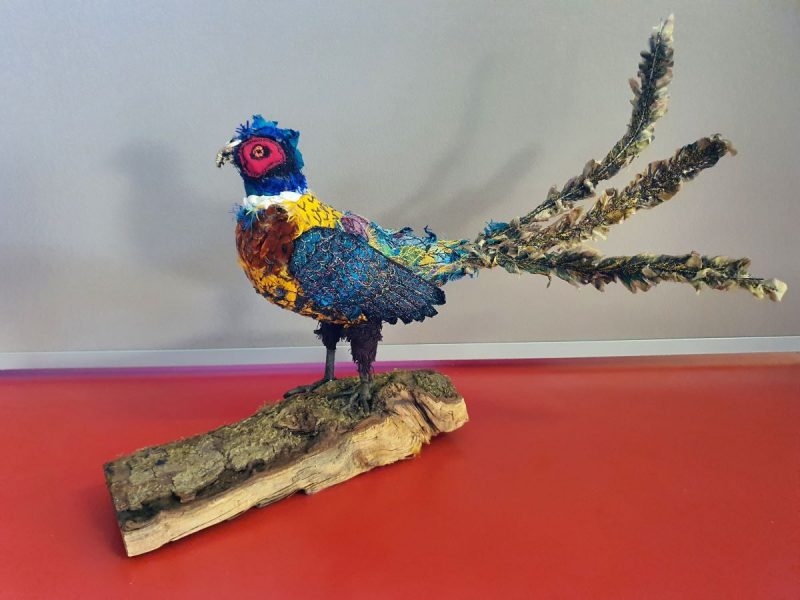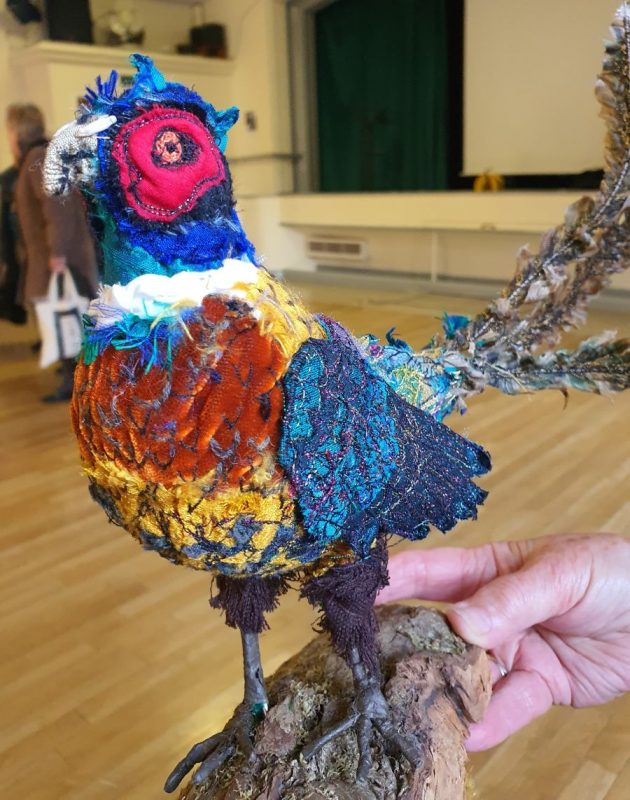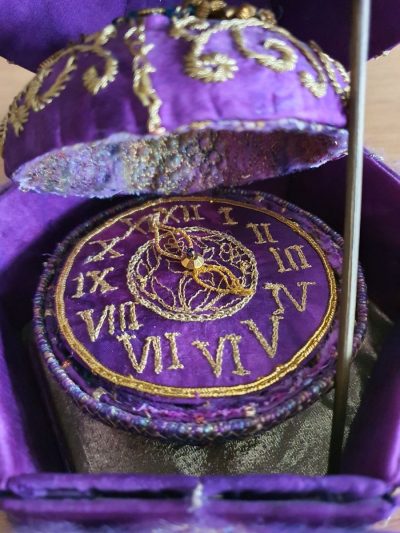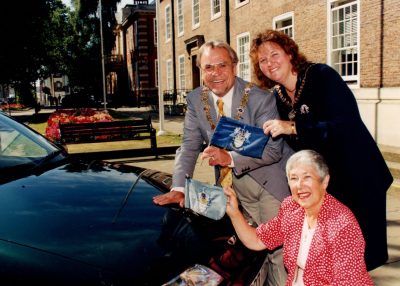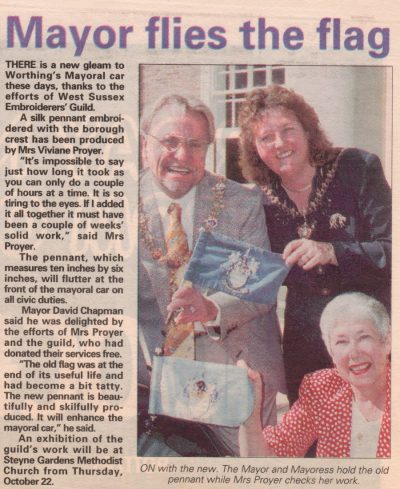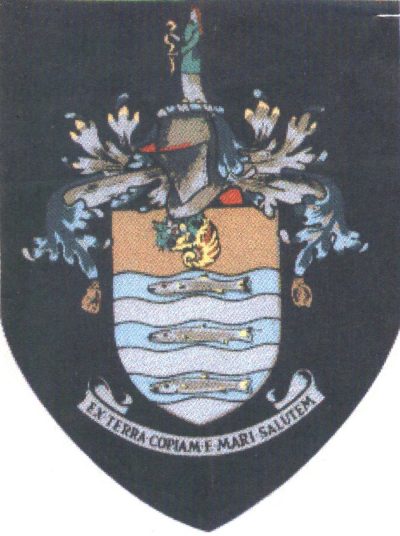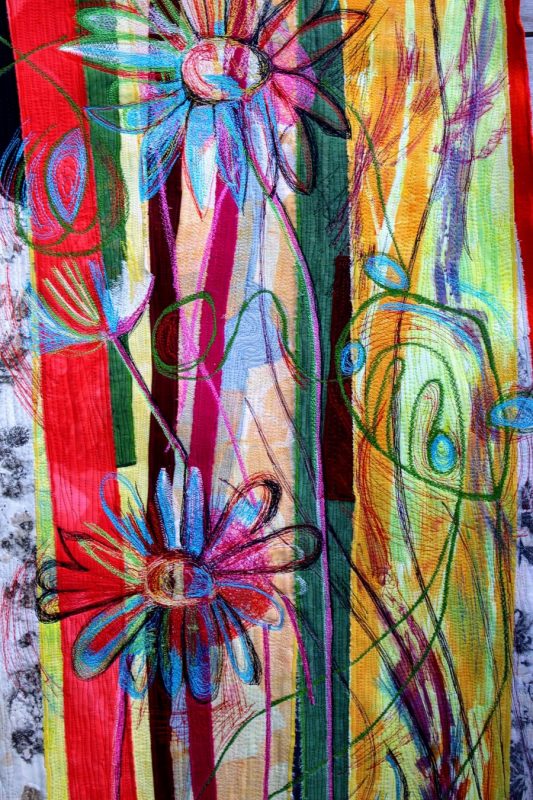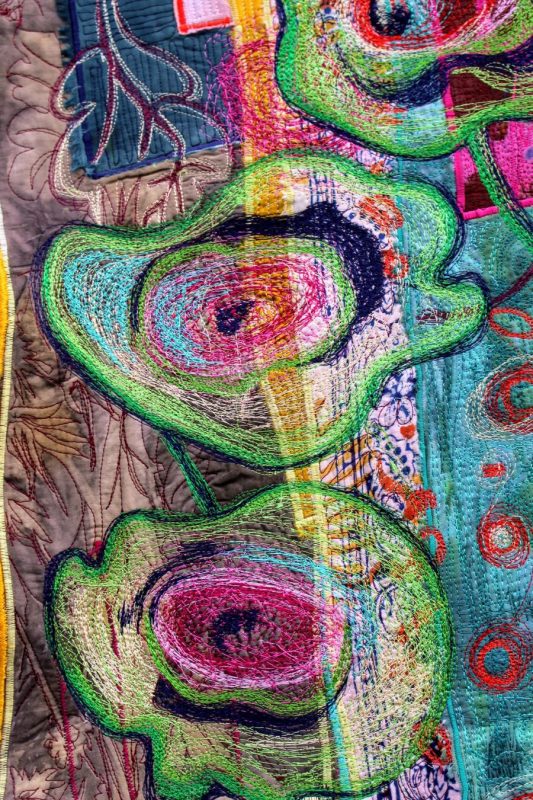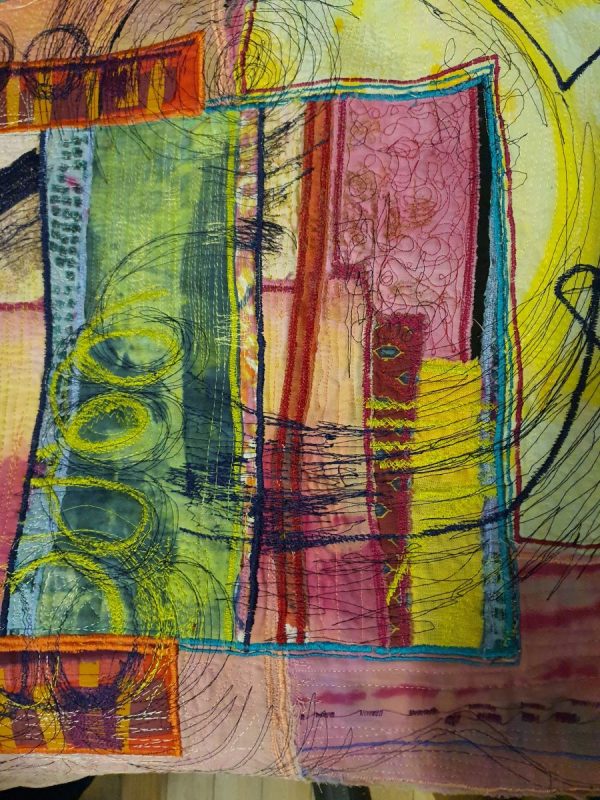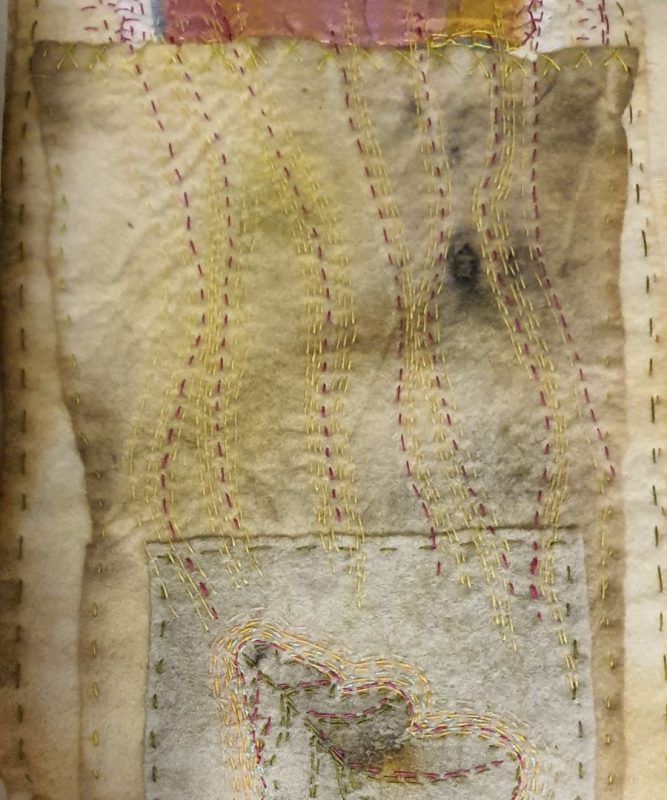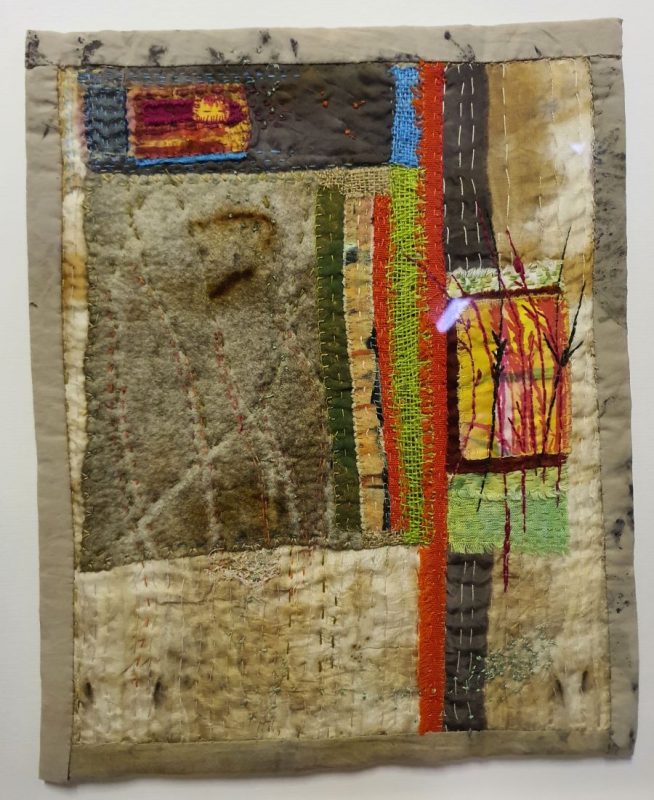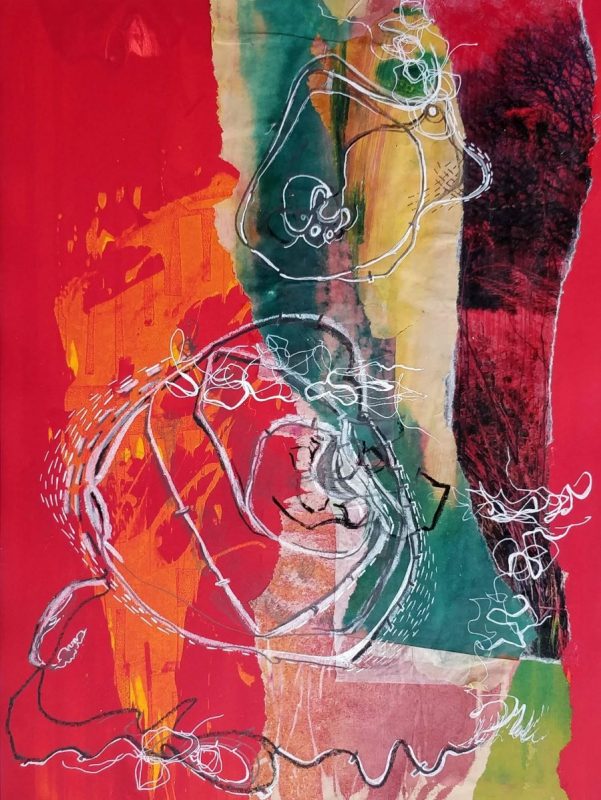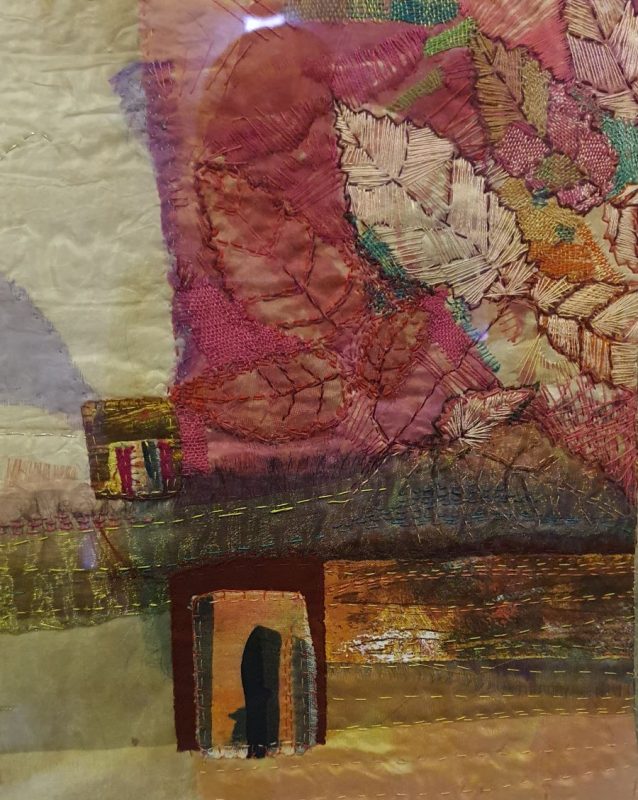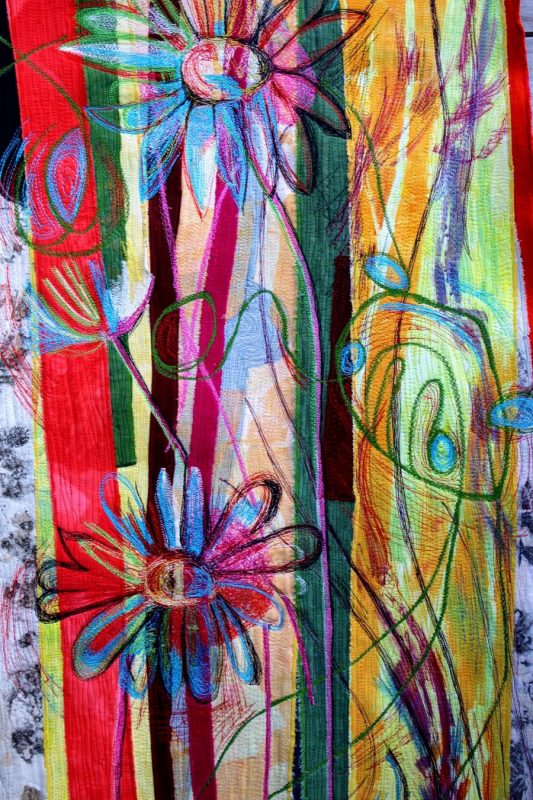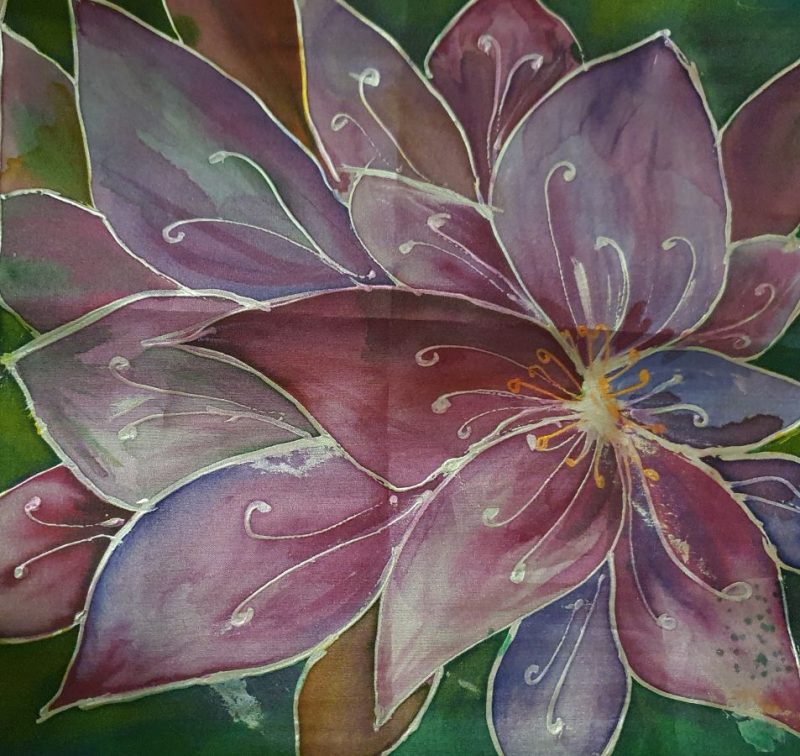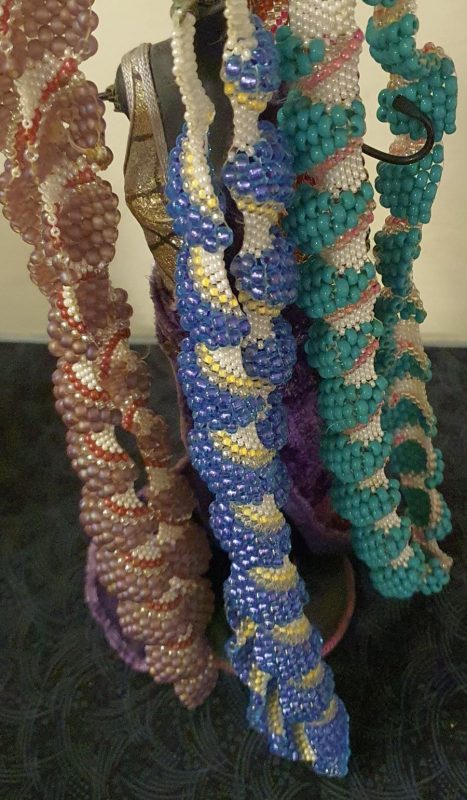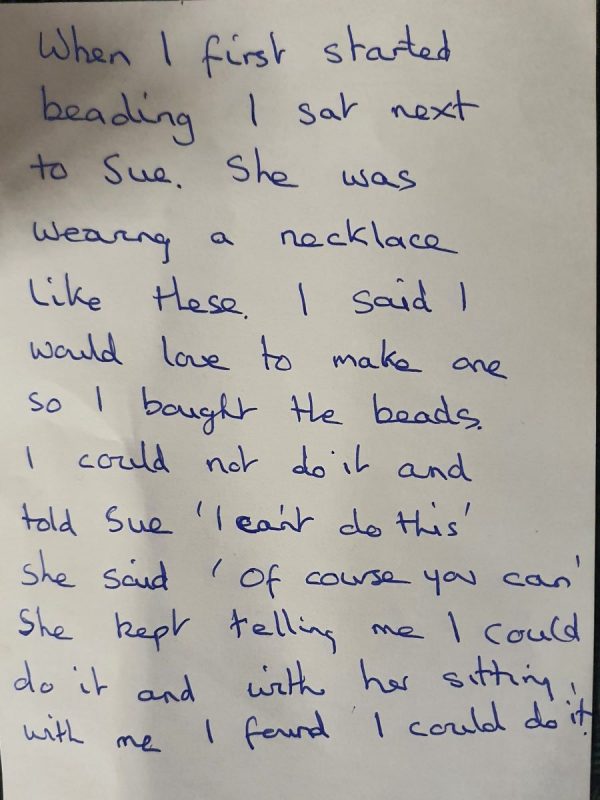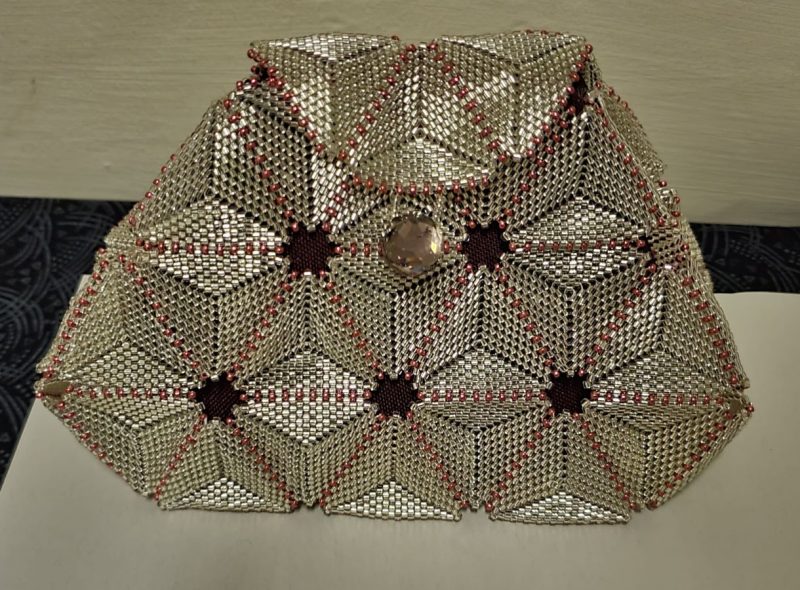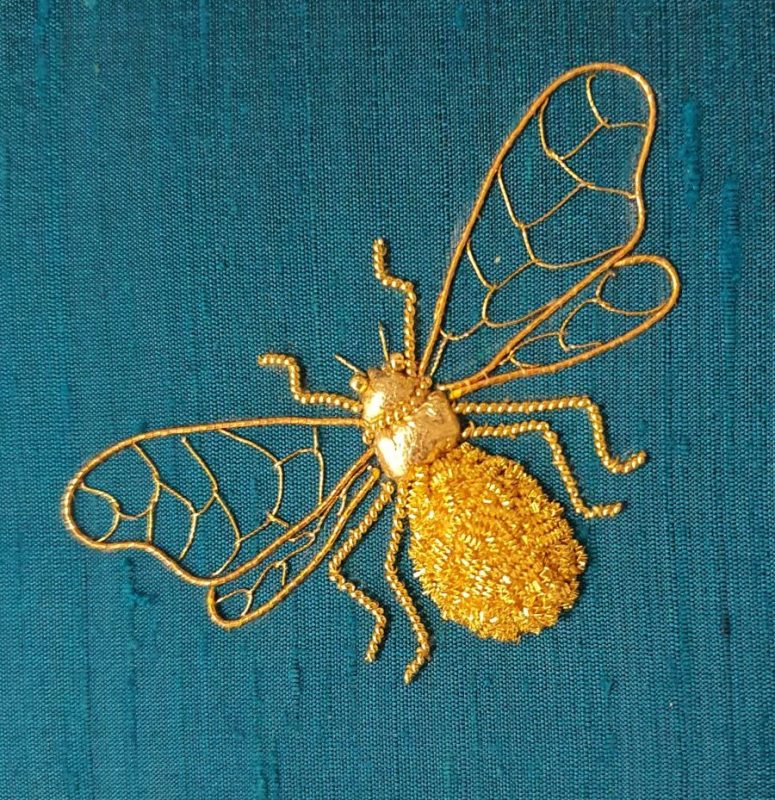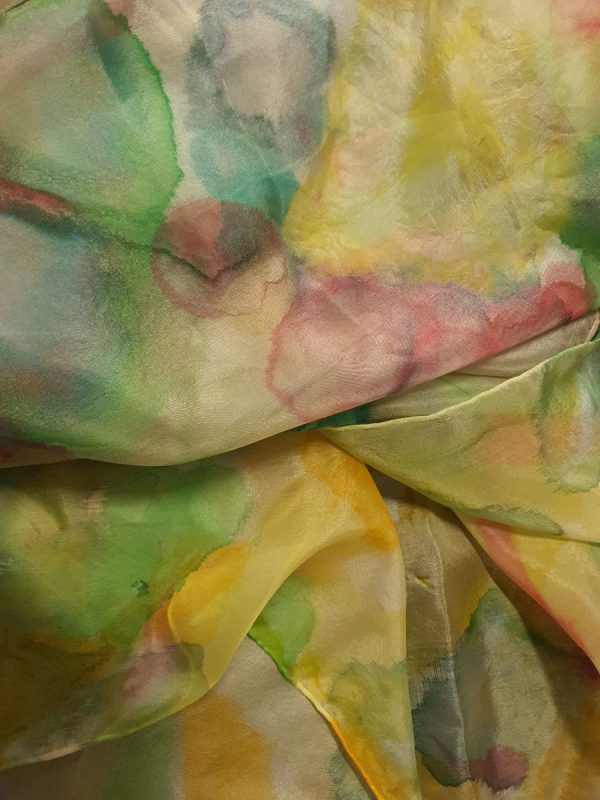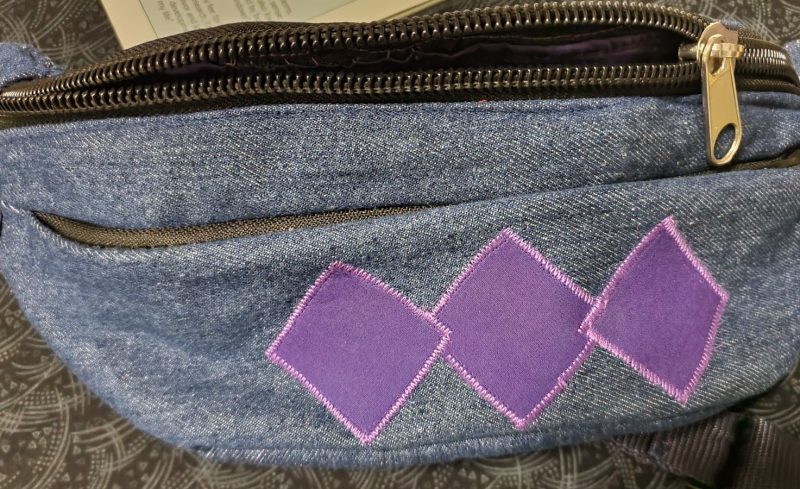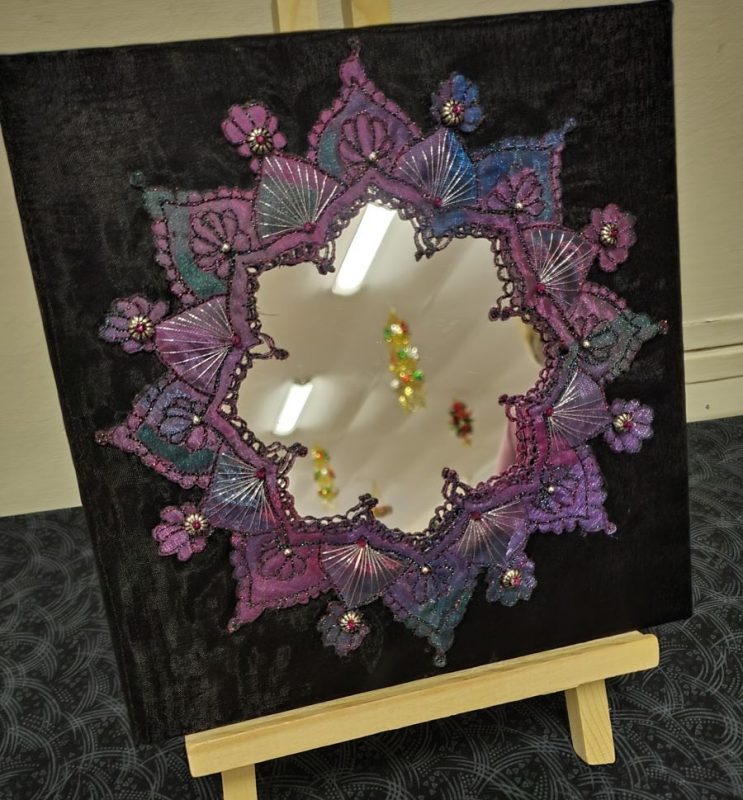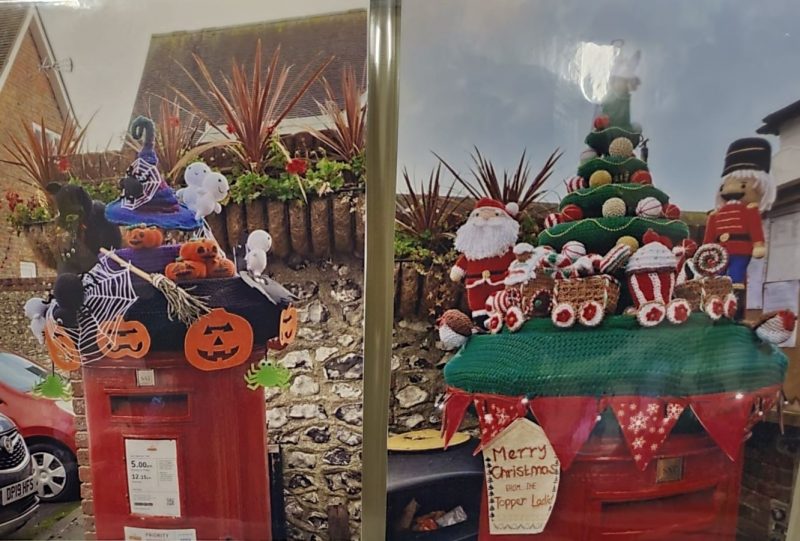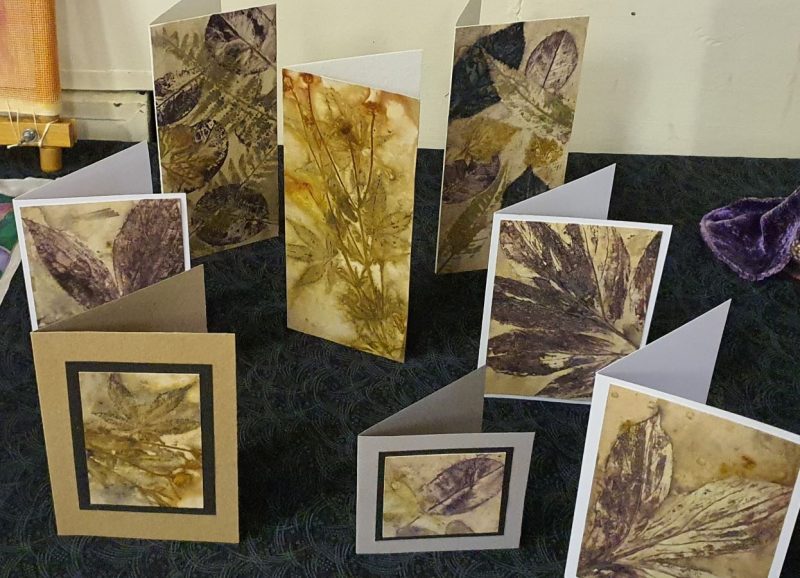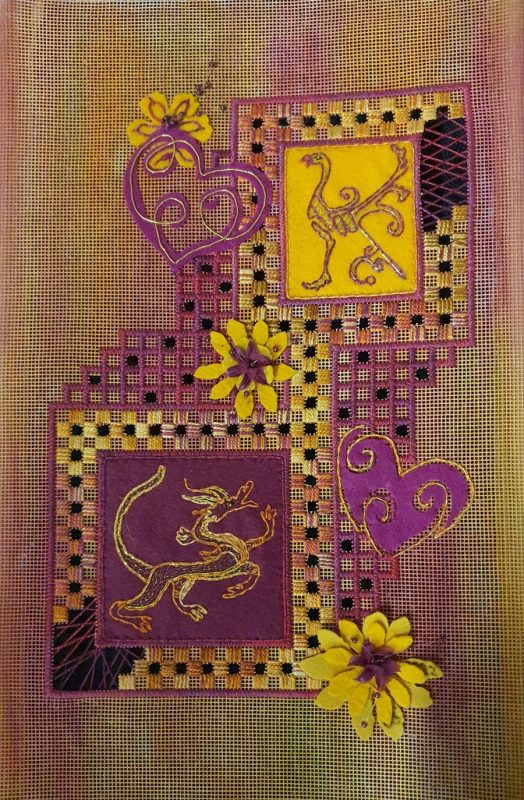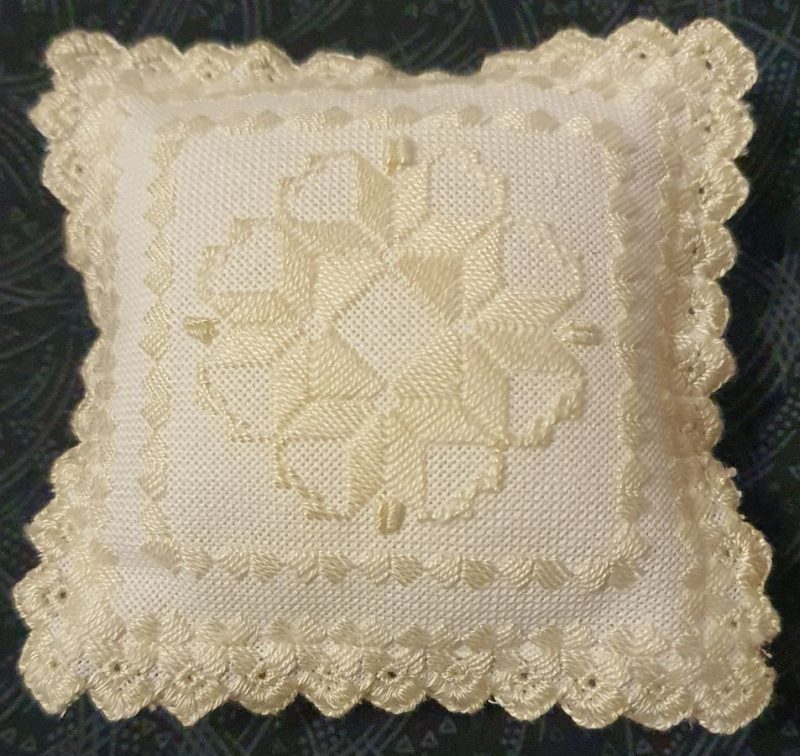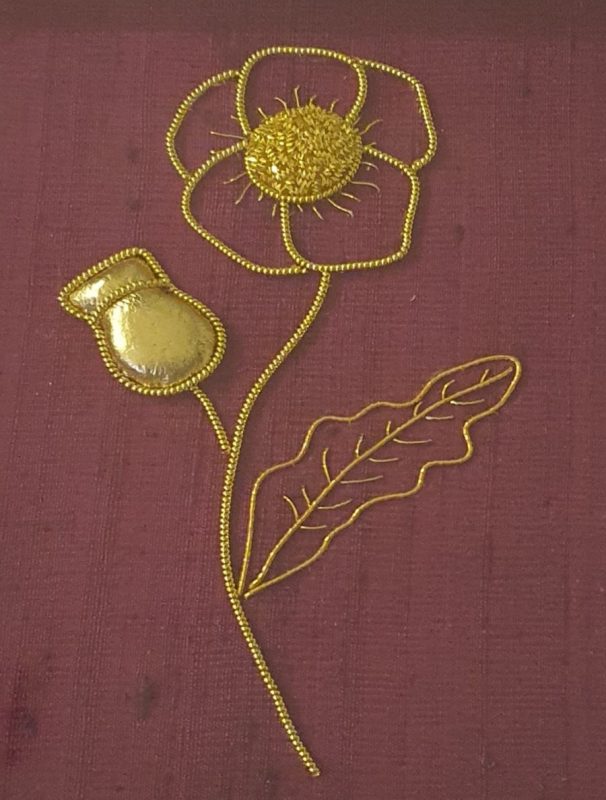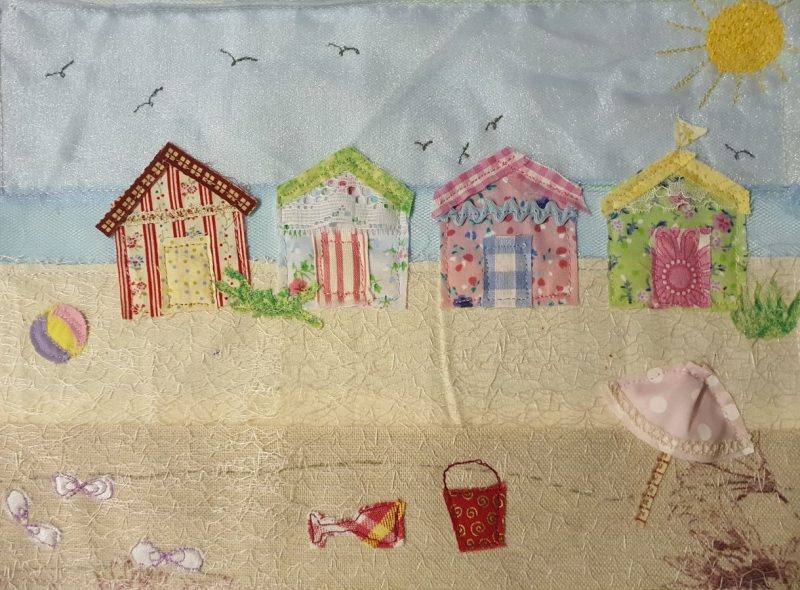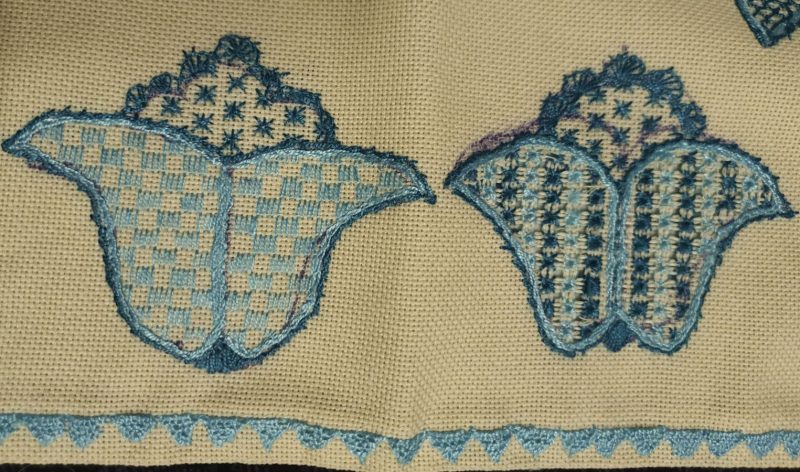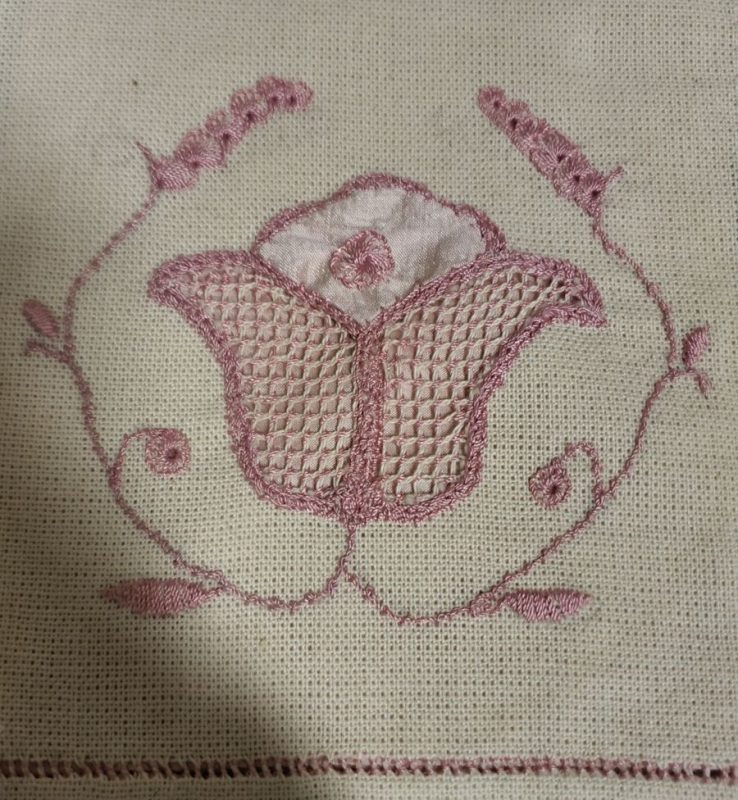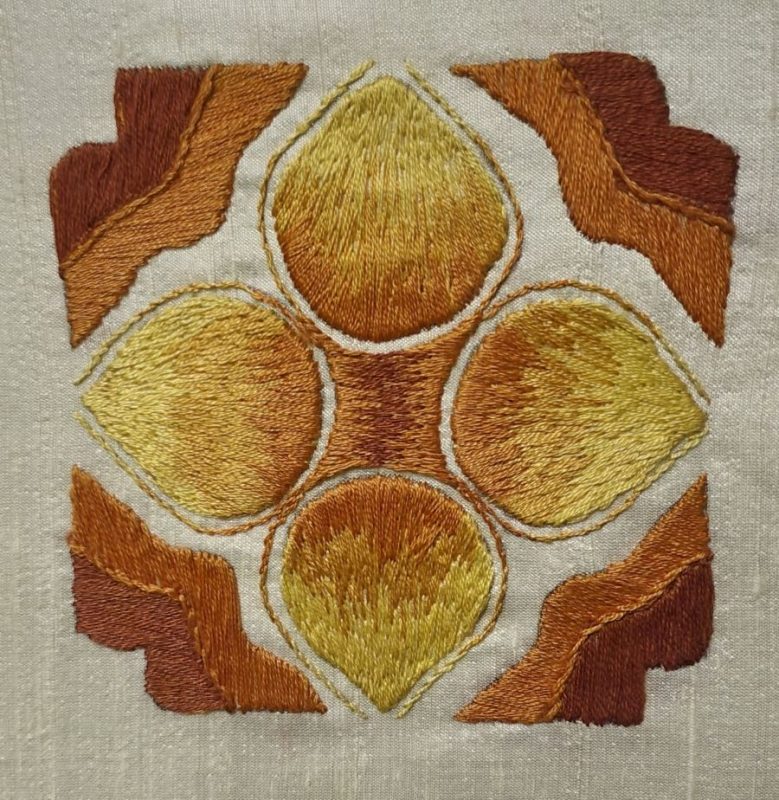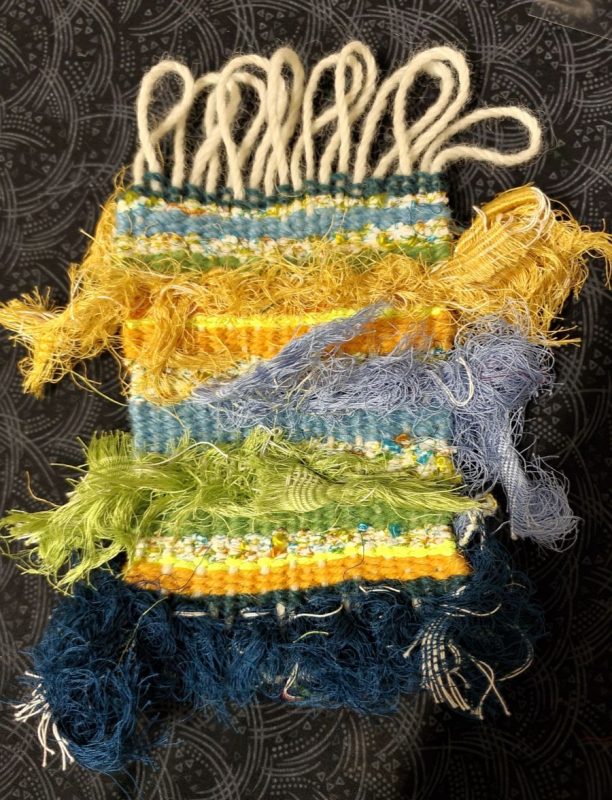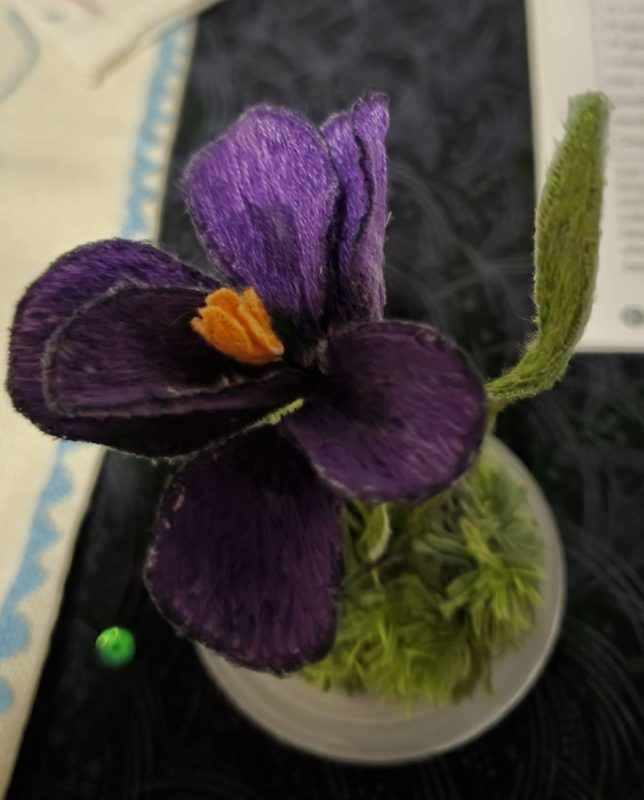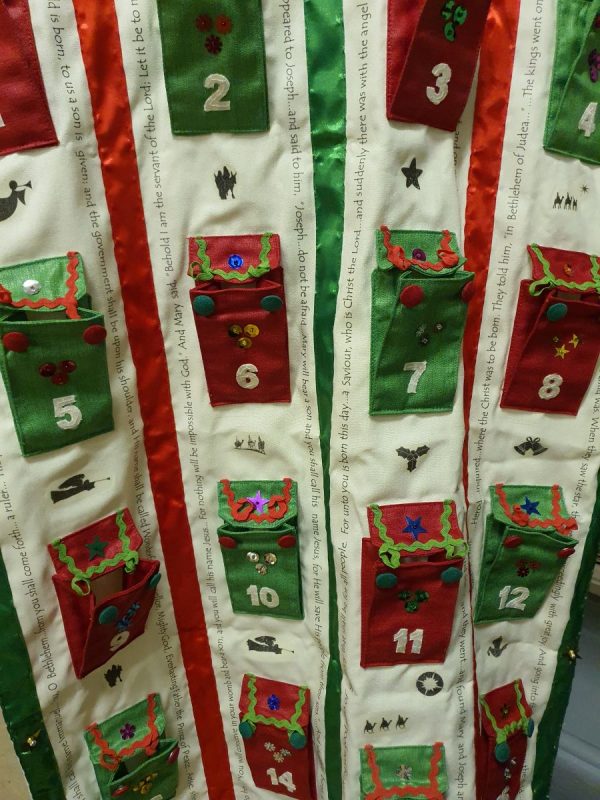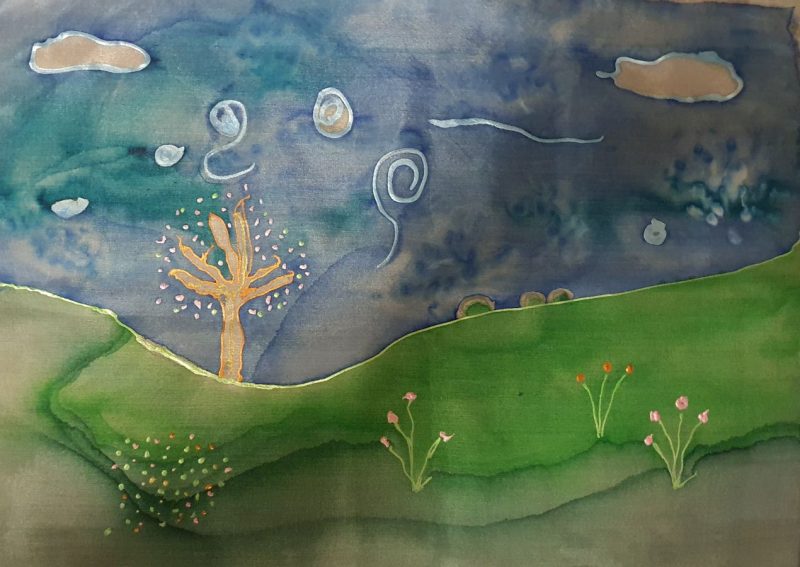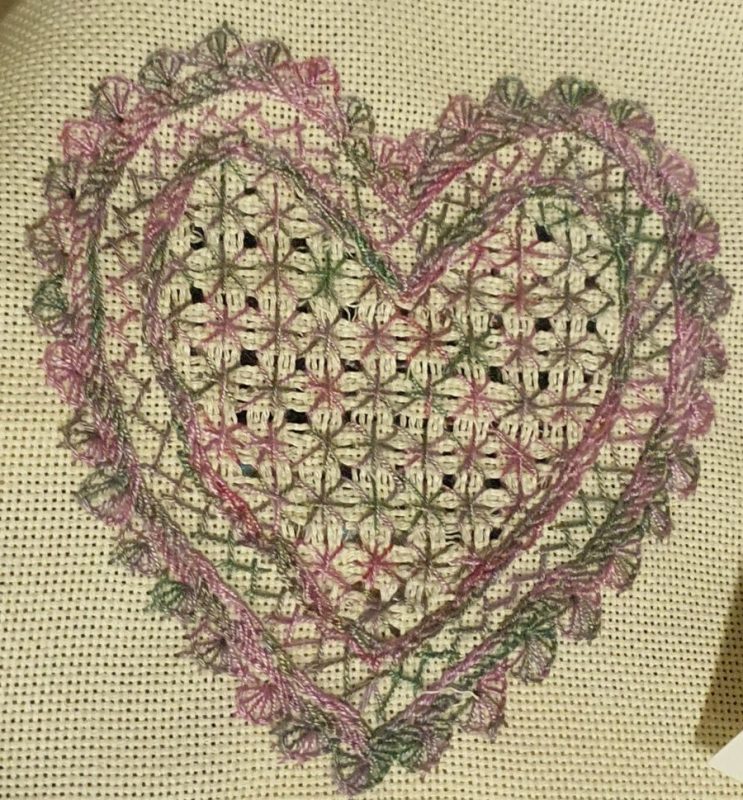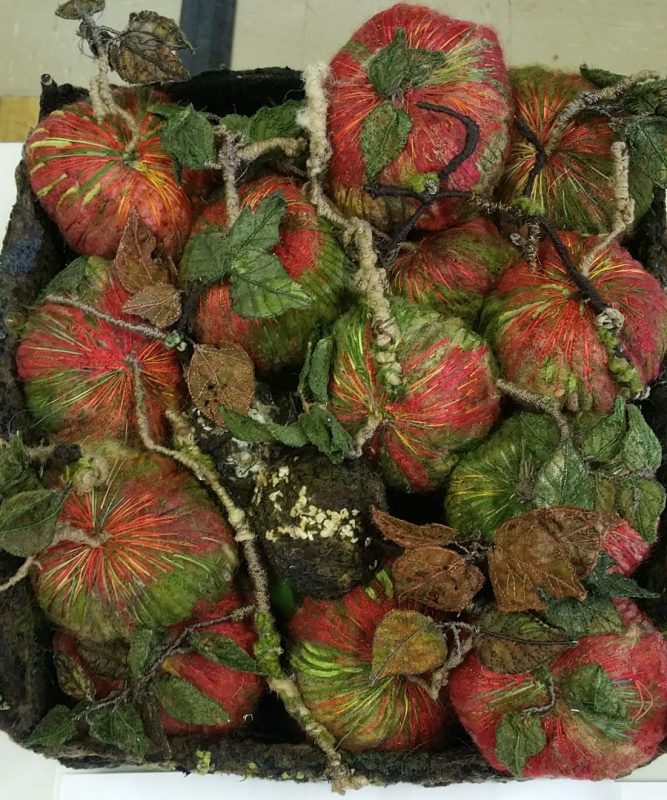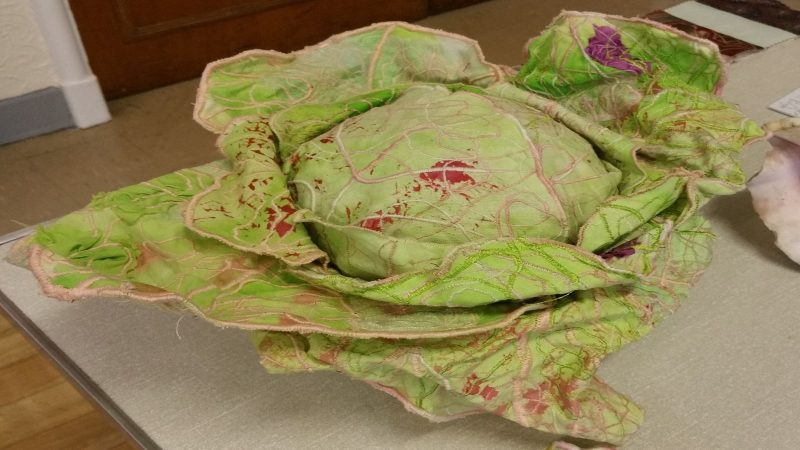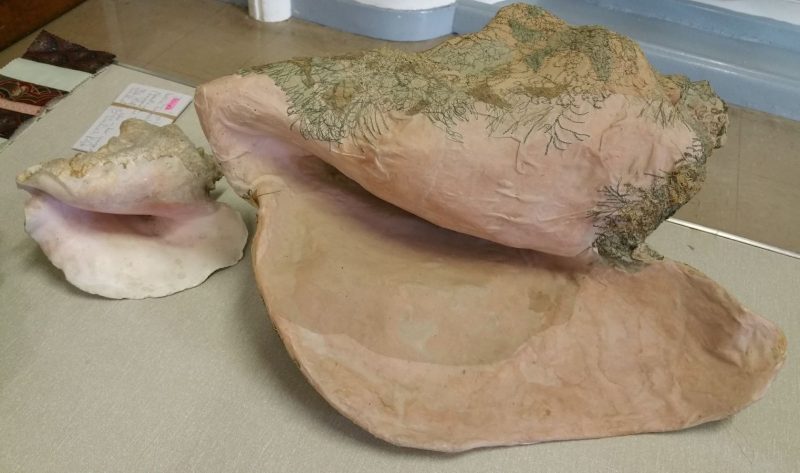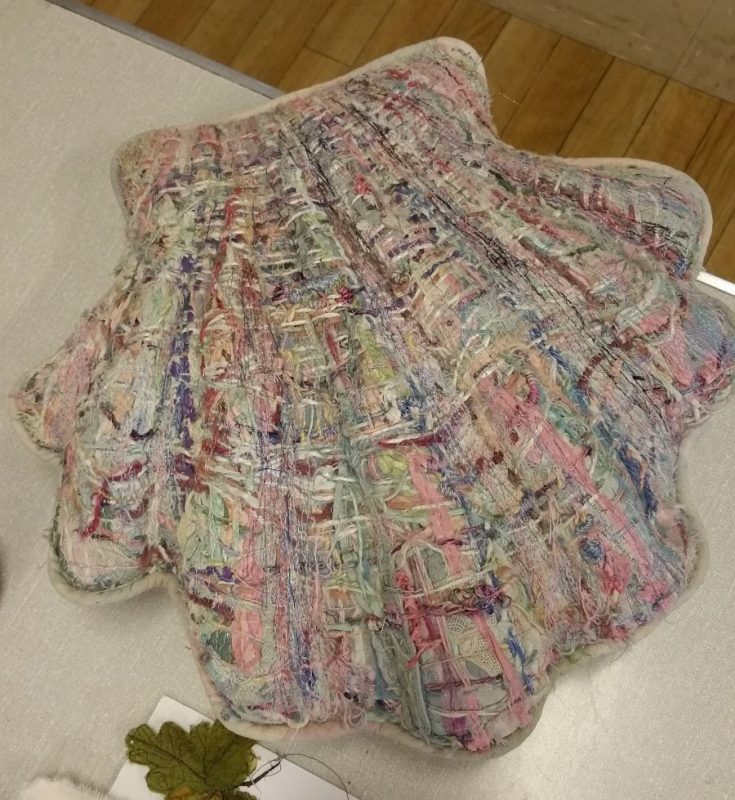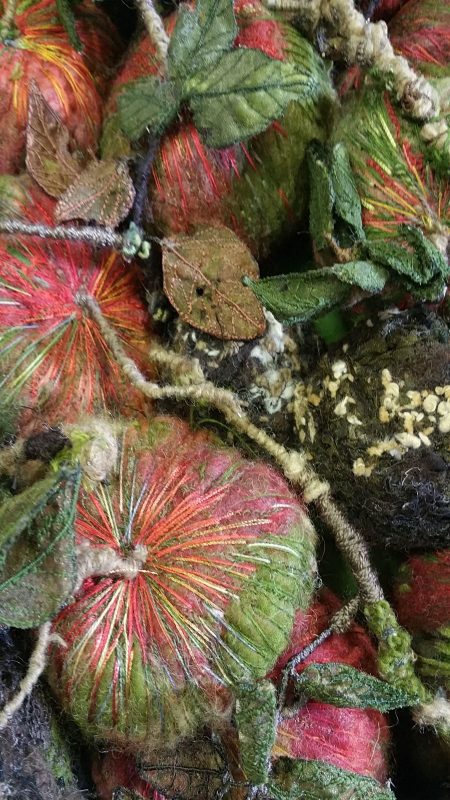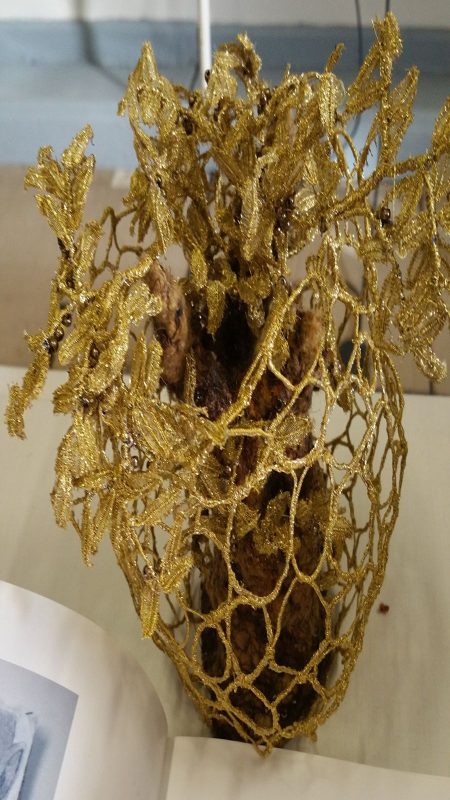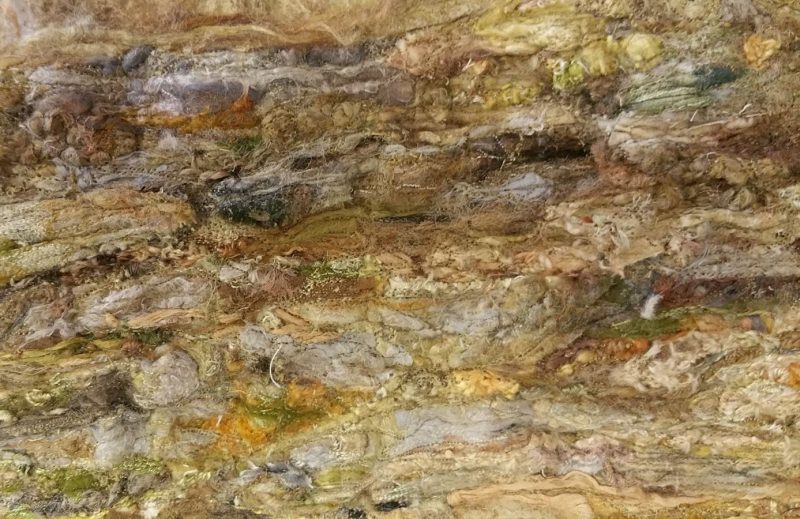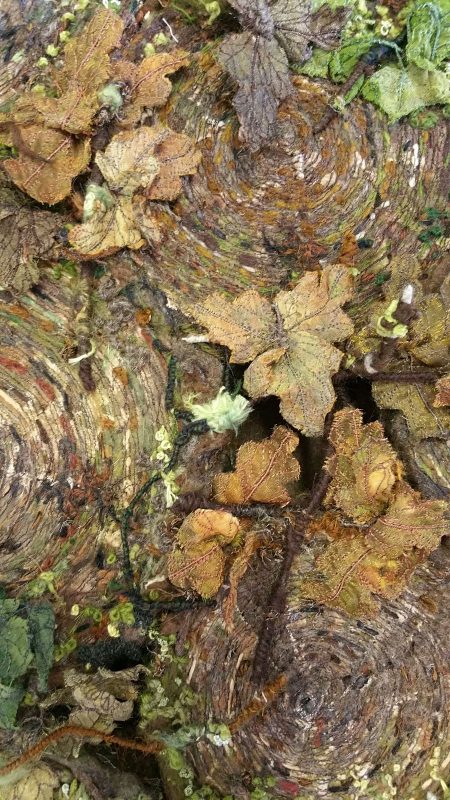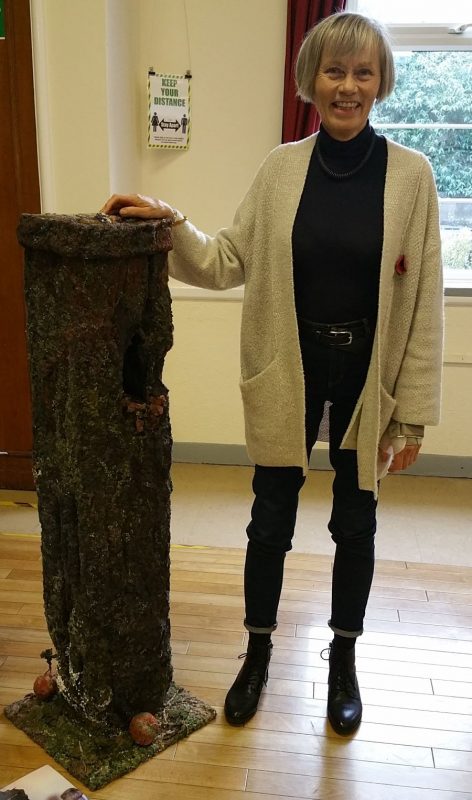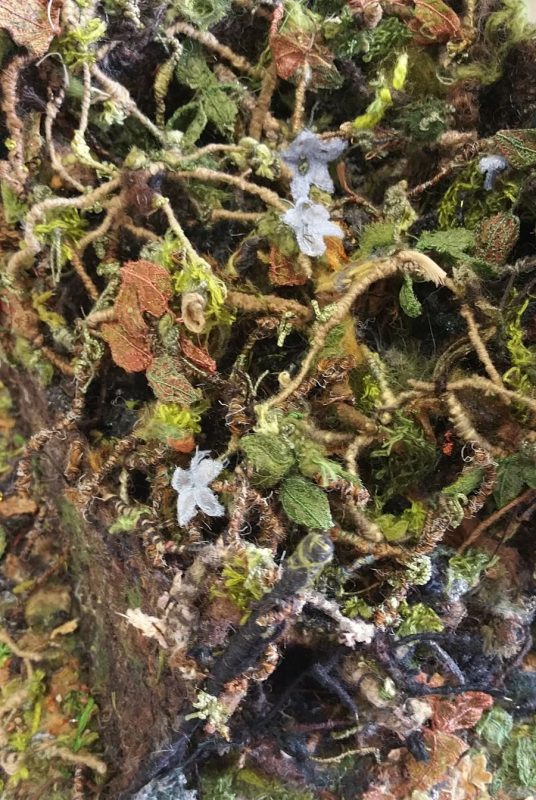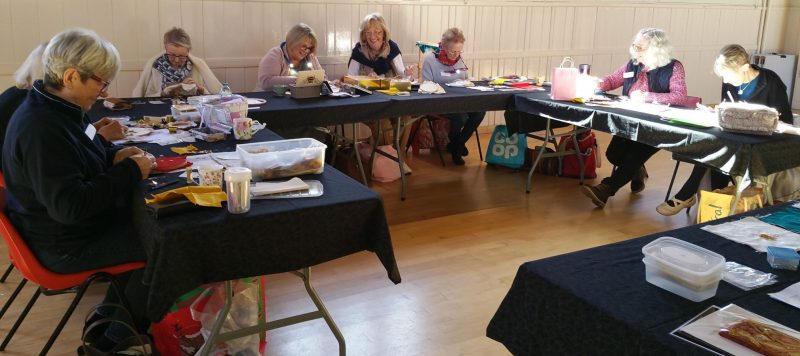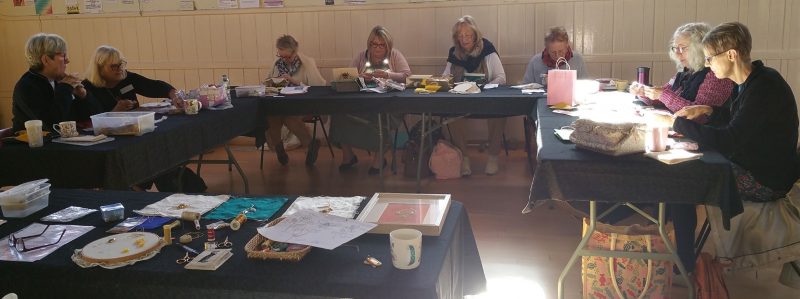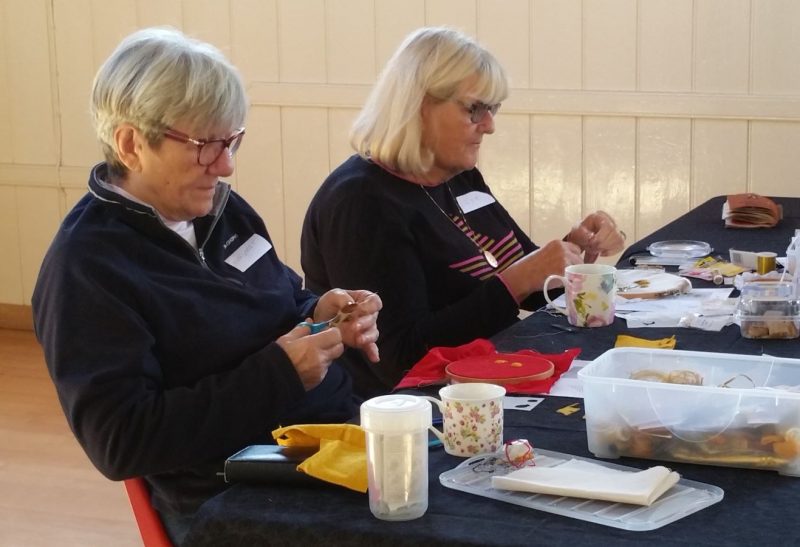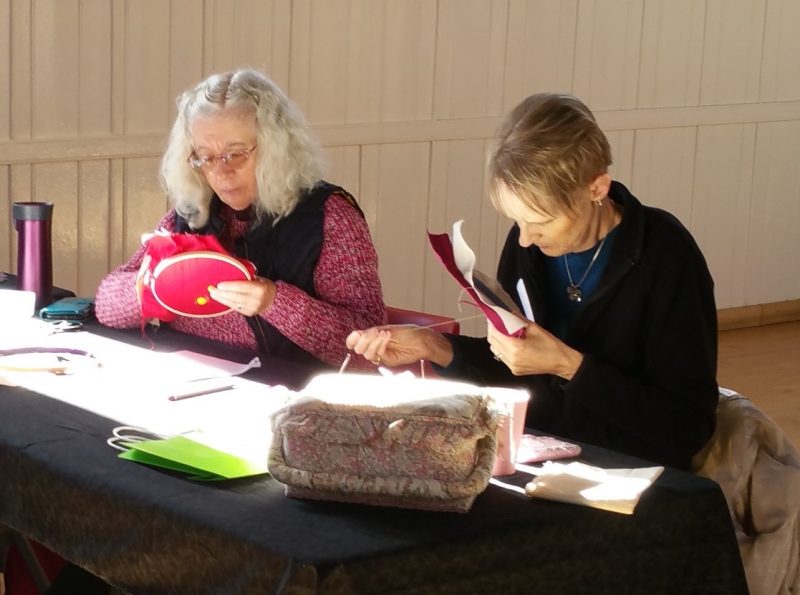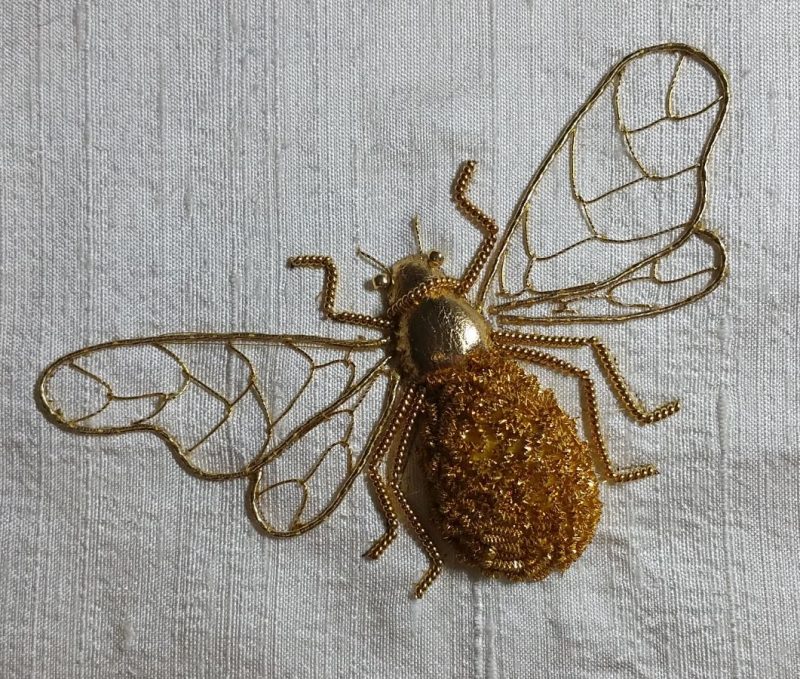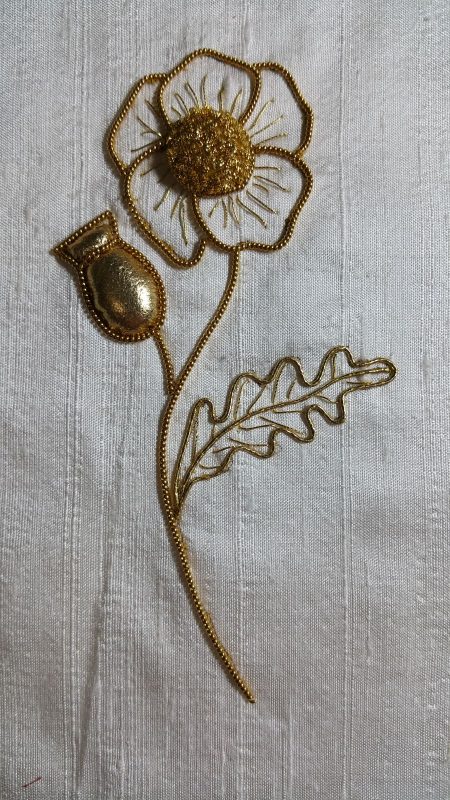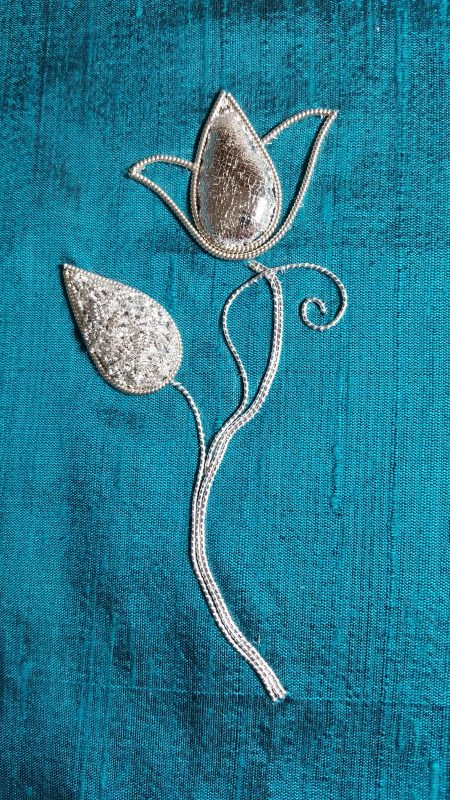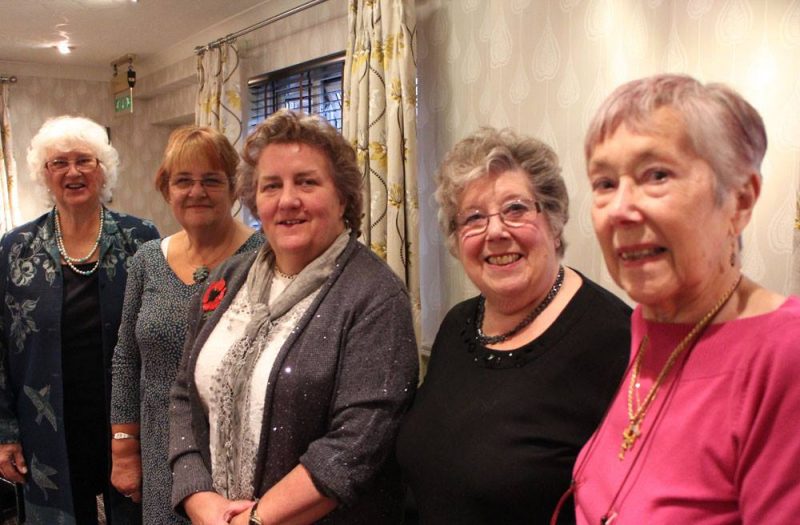 Members will have heard by now about the sad loss of Viviane Proyer, a long-term member of our group and good friend to many. There is a tribute to Viviane in our newsletter for members. In addition, we would like to share some words here that were written by Viviane herself, describing her journey into embroidery. Viviane is pictured here during our 40th anniversary celebrations, with others who have also all had an influence on our group. Left to right: Anne Turner, Viv Scrase, Linda Hoddy, Eileen Blaney, with Viviane on the right.
Members will have heard by now about the sad loss of Viviane Proyer, a long-term member of our group and good friend to many. There is a tribute to Viviane in our newsletter for members. In addition, we would like to share some words here that were written by Viviane herself, describing her journey into embroidery. Viviane is pictured here during our 40th anniversary celebrations, with others who have also all had an influence on our group. Left to right: Anne Turner, Viv Scrase, Linda Hoddy, Eileen Blaney, with Viviane on the right.
MEMORIES WRITTEN BY VIVIANE
Godmothers Kitchen and Making do and Mending
I was born in Switzerland and lived there until I was 19, so my upbringing was in that country and it was there that my early experiences of stitching and knitting took place.
I was brought up with my maternal grandmother who had a great influence on my use of the needle. She had seven children and with a growing number of grandchildren she was deft at making something out of “nothing”. She was always making little presents for us all with remnants, embellishing the various items with crochet and embroidery. Perhaps this was the beginning of my love of “remnants”, always looking in the tubs, the fabric shops, always finding something that can be used later.
During the war the Government issued wool packs to be distributed to schools and organisations asking for socks to be knitted for soldiers in the Army. As a very young girl I knitted a pair with my aunts help. This was good training for later in my married life as my husband loved hand knitted socks. I somehow enjoyed doing the heel best as this took away the boredom of the straight bit!
At school we were taught to “mend” all manner of things. So, we mended, neatly patching and adding new pieces to sheets, shirts etc. and sometimes using the tail of a shirt to make a new collar. We learned to do all manner of seams, plain seam, French seam. felled seam. Mending was an art in itself.
Whilst we stitched in class, we had a practice of someone reading a book out loud, taking turns. Usually a pupil, well advanced in her work, would have the privilege to read in class. I enjoyed both stitching and reading and often found myself sitting on a desk, perched above the others, reading away. Wonderful!
It was the practice in Switzerland for every girl to prepare her “trousseau”. A list was made of the required items. There was a standard list, all made in good cotton or linen, whatever you could afford. Specialist firms existed producing such quality fabrics. Once bought, all the pieces were initialled with embroidery and sometimes embroidered with very intricate patterns. These items were to last a lifetime.
As I grew older, we used to spend the winters evenings in my Godmothers kitchen cosy with the warmth of the Aga, a big lamp on the round table and there we would stitch, making tablecloths for the local fete. It was heaven. We chatted away, sometimes listening to the radio – a play or a concert. These were really lovely and peaceful evenings – and no television.
Then I married, had children and my husband (very wise person) bought me my first sewing machine, my very own…and all the skills learned in my childhood had to be put to the test. Money was short and I remembered my grandmother making do, using old to make new. I became very inventive, trying all kinds of mix and match…decorating dull little dresses, learning to smock, knitting intricate patterns for boy’s jumpers. All had to be different. But I never knitted stockings for my daughter. I had this awful memory of the scratchy wool used for one pair of stockings my mother made me. Horrid.
I always was grateful for the early teaching I received. I know I was then good at it and enjoyed it, but it was even better when later on, much later on, when I retired, to be able to throw the boundaries to the wind and be really creative. And the discovery of the Embroiderers Guild opened an entirely new vista.
Another article written by Viviane
I have always been able to stitch, but it was mostly for practical purposes. I consider myself a late developer as I got into the creative side of stitching when I retired. I met Ken DeDenne whose sister was a doyenne of the Embroiderers Guild and he encouraged me to take a City and Guilds course in Harrow. I did two years then we moved to Sussex, and I continued in Fareham. I never looked back.
I took a year’s course with Jane Lemon “Ecclesiastic Embroidery” which was wonderful and has been very useful when asked to do some throws and stoles for the Chapel in the newly built hospital in Worthing. I am an all-rounder, being interested in all kinds of embroidery and like working with paper too. I love attending courses to give more variety in my creativity. Basically, I enjoy all manner of Textile orientated creative work. I also enjoy passing on to others my knowledge and promote all textile activities.
PRAYER
This is a prayer sent to the Scene South East Regional magazine by Viviane in May 2020. Very appropriate now.
GOD GRANT THAT I MAY SEE THE STITCH
UNTIL MY DYING DAY
AND WHEN MY LAST SHORT THREAD IS CLIPPED
AND SCISSORS TUCKED AWAY
THE WORK THAT I HAVE DONE LIVE ON
THAT OTHER FOLK MAY SEE
THE PLEASURE I HAVE KNOWN, LORD
IN THE SKILL YOU GAVE TO ME.
RIP Viviane.
 Thank you to Maria who wrote this description of the talk given by Rosi Robinson at our March meeting.
Thank you to Maria who wrote this description of the talk given by Rosi Robinson at our March meeting. Rosi told us that batik is a traditional resist technique of decorating fabric where wax is applied to white fabric to resist colourful dyes. She uses this technique to produce pictures that are often mistaken for watercolour paintings. Rosi started her talk by showing various batiks collected from around the world and explaining the various techniques used. As these were then passed around the room there was a “buzz” as everyone touched and discussed the various fabrics.
Rosi told us that batik is a traditional resist technique of decorating fabric where wax is applied to white fabric to resist colourful dyes. She uses this technique to produce pictures that are often mistaken for watercolour paintings. Rosi started her talk by showing various batiks collected from around the world and explaining the various techniques used. As these were then passed around the room there was a “buzz” as everyone touched and discussed the various fabrics. Rosi then demonstrated the technique by applying hot wax to fabric which works as a resist. She demonstrated different waxing tools such as cantings (tjantings), brushes and caps (tjaps). She then painted on the dyes. The waxed areas resist the dye and remain the original colour. Only unwaxed areas take up the dye. Start with the lightest colours, gradually building up the tones to the darker colours. The fabric has to dry before the next layer of wax is added. Once completed a hot iron is used to remove most of the wax and the item is then boiled or dry cleaned.
Rosi then demonstrated the technique by applying hot wax to fabric which works as a resist. She demonstrated different waxing tools such as cantings (tjantings), brushes and caps (tjaps). She then painted on the dyes. The waxed areas resist the dye and remain the original colour. Only unwaxed areas take up the dye. Start with the lightest colours, gradually building up the tones to the darker colours. The fabric has to dry before the next layer of wax is added. Once completed a hot iron is used to remove most of the wax and the item is then boiled or dry cleaned.